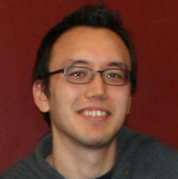By Andy McKenzie (MP3)
ANDY: You and your team at East Harlem Software developed the CareTeam App, which your website describes as “a web application that gives clinicians instant access at the bedside to contacts, guidelines, and protocols customized for their practice environment.” How did you come up with this idea?
TED: The CareTeam App was actually born as the EHHapp, which started out as a static website that Ammar Siddiqui (MD class of 2016, current Columbia anesthesia intern) developed to coordinate referrals for EHHOP, the student-run free clinic at Mount Sinai. Since Ammar was working with a constantly rotating cast of first year med students to run access-to-care services every Saturday, it was a lot easier to get them up to speed and productively advising patients when they had a mobile website in their hands with high-yield information from previous members of the team. Therefore, he made the first version of the EHHapp to save valuable time, so everyone could better focus on patients’ needs. Of course, since info on referrals changes rapidly— services at Mount Sinai and nearby hospitals shift around all the time—the next challenge was to make the information editable by all team members. Otherwise, the website would go stale and lose its value within months. To do this, Kevin Hu and Mark Finkelstein (two current medical students at Sinai) and I figured out how to integrate the mobile-friendly front end of the website with a custom content management system that uses the Ruby and git software environments.
We used the Wikipedia model for the UI: every page has an Edit button. You login with a Mount Sinai email address and edit the pages in Markdown, a really simple formatting system that looks like plaintext email. When you save the changes, they can either go public right away if you’re an admin of the app, and if you’re not, they’re forwarded to one of the admins for approval. Because of the way git can track changes, admins can receive multiple edits for the same page and choose to merge them (or not) individually, so the pages always stay up to date with well-curated information.
Using this strategy allowed us to quickly scale the number of people that could contribute to the EHHapp. Within the first year of the launch of the editable app in September 2013, it grew to nearly 200 pages of content, with over 1,600 separate edits. Today, the app has logged 4,943 edits. It’s now an indispensable guide for all EHHOP members—kept alive entirely by user-contributed changes.
Eventually, the attendings that volunteer at EHHOP on Saturdays caught wind of our app (and some began using it too). They wanted to try it in their own practice environments, e.g., to support medicine house-staff on inpatient floors or at Internal Medicine Associates, the larger outpatient clinic that hosts EHHOP. When we heard this, and that these departments could be willing to pay for it, we knew we had a potential product. That’s when we decided to form a Delaware C corporation, convert the software into a software-as-a-service platform, and start providing it on a contract basis.
ANDY: What advice would you give to incoming MD/PhD students who are interested in starting a business?
TED: First, find a team, and then build your minimum viable product so you can get it in the hands of anybody, anywhere, that wants to use it. Start early—it’s a lot easier to carve out time for a potential business idea when you’re a first or second year compared to the grad phase, when your thesis advisor will expect you to continually grow your productivity rather than funnel time into non thesis-related projects. It also helps to have the idea half-baked before you find your thesis advisor, so you can bring it up with them and see how they react to that being a part of your life.
Secondly, if there is any chance developing the idea involved Mount Sinai resources—you should read the Intellectual Property policy early and carefully to see how that’s defined—you’ll want to disclose it to the institution. This is perhaps the most difficult part of getting off the ground, since if Mount Sinai decides that it contributed resources and therefore has ownership, you’ll have to license the IP from Mount Sinai. In our case, this required hiring a lawyer and spending months working through tricky legalese in contracts before we could close our first sale.
ANDY: Let’s dream big. What do you think would be most helpful to make biomedical entrepreneurship a more common career path for physician-scientists?
TED: If I could change anything? It would be remarkable if thesis research (for a PhD) could be more tightly coupled with training in starting and running a business. An incubator-type model might work. However, this isn’t to say there aren’t current opportunities for such training that already fit well into the PhD phase. For instance, at ISMMS, our students have done internships at Verily, IBM, and McKinsey.
ANDY: Thank you for the fascinating interview, Ted!

